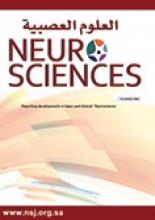Article Figures & Data
Tables
Study data n (%) Age group 25–35 years 160 (48.8) 36–45 years 95 (29.0) 46–55 years 49 (14.9) 56–65 years 19 (05.8) >65 years 05 (01.5) Gender Male 231 (70.4) Female 97 (29.6) Nationality Saudi 274 (83.5) Non-Saudi 54 (16.5) Position Resident 140 (42.7) Specialist 79 (23.8) Consultant 110 (33.5) Years of experience in psychiatry 1–5 years 129 (39.3) 6–10 years 66 (20.1) 11–15 years 57 (17.4) 16–20 years 39 (11.9) >20 years 37 (11.3) Statements Low Average High n (%) n (%) n (%) Are you familiar with telepsychiatry technology? 98 (29.9) 171 (52.1) 59 (18.0) Are you familiar with the medical applications of telepsychiatry technology? 121 (36.9) 156 (47.6) 51 (15.5) How often are conferences, speeches, or meetings held in your workplace regarding telepsychiatry technology? 180 (54.9) 109 (33.2) 39 (11.9) Are you familiar with telepsychiatry tools? 131 (39.9) 145 (44.2) 52 (15.9) Are you familiar with telepsychiatry guidelines? 177 (54.0) 109 (33.2) 42 (12.8) Are you familiar with the use of telepsychiatry in other countries? 163 (49.7) 137 (41.8) 28 (08.5) Is continuous training in the use of telepsychiatry necessary for doctors? 62 (18.9) 157 (47.9) 109 (33.2) Total score (mean±SD) 12.3±3.45 -- -- Level of knowledge Poor (≤12 score) 170 (51.8) -- -- Good (>12 score) 158 (48.2) -- -- The assessment of psychiatrists’ knowledge toward telepsychiatry is described in Table 2.
Statements Disagree Agree n (%) n (%) Telepsychiatry is a viable approach for providing medical care services to patients 46 (14.0) 282 (86.0) There is a potential role for information and communication technology (ICT) in healthcare 42 (12.8) 286 (87.2) Using telepsychiatry systems can save time and money 32 (09.8) 296 (90.2) Telepsychiatry systems can save effort 36 (11.0) 292 (89.0) The application of ICT in healthcare is already available 121 (36.9) 207 (63.1) Total Score (mean±SD) 4.15±1.17 -- Level of perception Poor (≤3 score) 63 (19.2) -- Good (>3 score) 265 (80.8) -- The factors related to perception toward telepsychiatry are shown in Table 3
Statements Disagree Agree n (%) n (%) I want to consult with large centers in my specialty from my hospital 39 (11.9) 289 (88.1) The implementation of telepsychiatry technology is appropriate to the current conditions in hospitals 36 (11.0) 292 (89.0) I think that my colleagues would be willing to implement telepsychiatry technology 47 (14.3) 281 (85.7) Telepsychiatry systems can be integrated into existing systems 50 (15.2) 278 (84.8) - Table 5
- Statistical difference between the knowledge and perception scores regarding the psychiatrists’ socio-demographic characteristics. (n=103).
Factors Knowledge score (21) Mean±SD H/Z test P-value Perception score (5) Mean±SD H/Z test P-value Age group a 25–35 years 11.4±3.11 Z=−4.236 3.91±1.31 Z=−3.349 >35 years 13.1±3.57 p<0.001** 4.39± 0.92 p=0.001 ** Gender b Male 12.5±3.41 Z=−1.621 4.27±1.01 Z=−1.897 Female 11.9±3.53 p=0.105 3.89±1.39 p=0.058 Nationality b Saudi 12.4±3.52 Z=−0.252 4.19±1.11 Z=−0.840 Non-Saudi 12.1±3.14 p=0.801 3.98±1.32 p=0.401 Positiona Resident 11.4±3.24 H=23.198 4.09±1.17 H=3.050 Specialist 12.2±2.73 3.99±1.38 Consultant 13.6±3.78 p<0.001** 4.36±0.91 p=0.218 Years of clinical experience a 1–5 years 11.2±2.93 H=22.609 4.08±1.15 H=7.035 6–10 years 12.5±3.23 3.89±1.42 11–15 years 13.4±3.69 p<0.001** 4.23±1.18 p=0.071 >15 years 13.2±3.77 4.46±0.76 How often do you interact with patients via emails or social media in your role as a doctor?a Never 10.0±2.88 H=36.378 3.88± 1.19 H=8.066 Sometimes/Rarely 12.8±3.22 p<0.001 ** 4.17±1.11 p=0.018 ** Often/Always 12.8±3.62 4.28±1.18 Number of smart devices a One 11.9±3.66 H=6.349 4.08±1.22 H=4.799 Two 12.4±3.45 4.07±1.14 Three 12.9±3.17 p=0.096 4.41±0.89 p=0.187 More than three 11.9±3.44 4.09±1.39 Have patients asked about online methods to contact you?b Yes 12.7±3.51 Z=−3.712 4.19±1.15 Z=−1.639 No 11.1±2.95 p<0.001** 4.04±1.14 p=0.101 Are you concerned regarding possible legal issues when interacting with patients online?b Yes 12.4±3.41 Z=638.37 4.14±1.14 Z=1.109 No 12.1±3.67 p=0.565 4.24±1.20 p=0.268 ↵ap-value was calculated using the Kruskal–Wallis H-test, bp-value was calculated using the Mann






